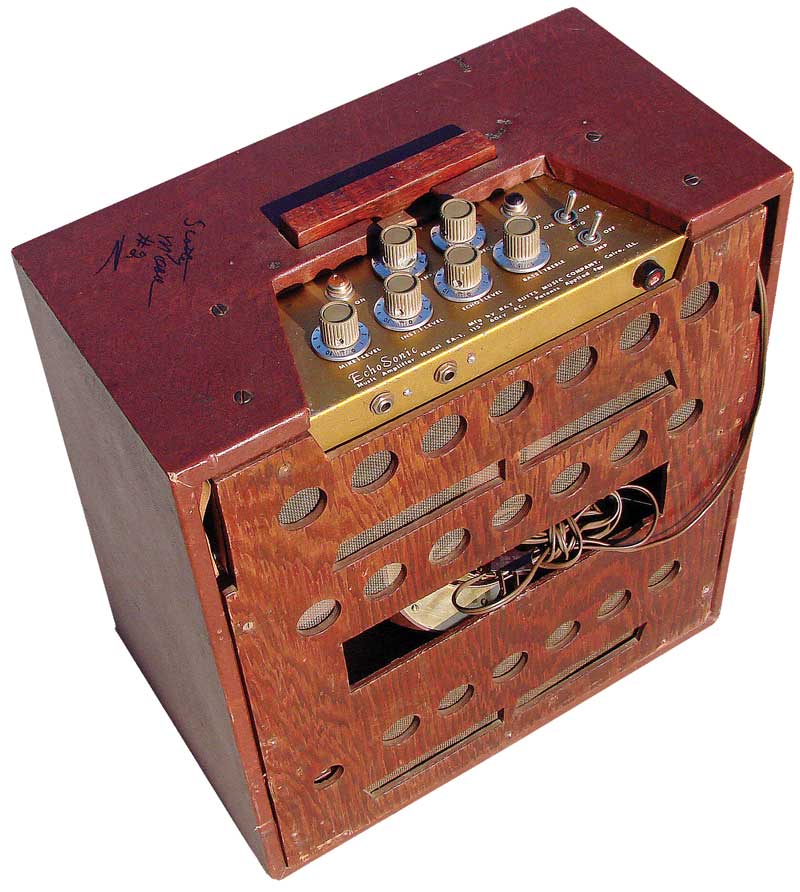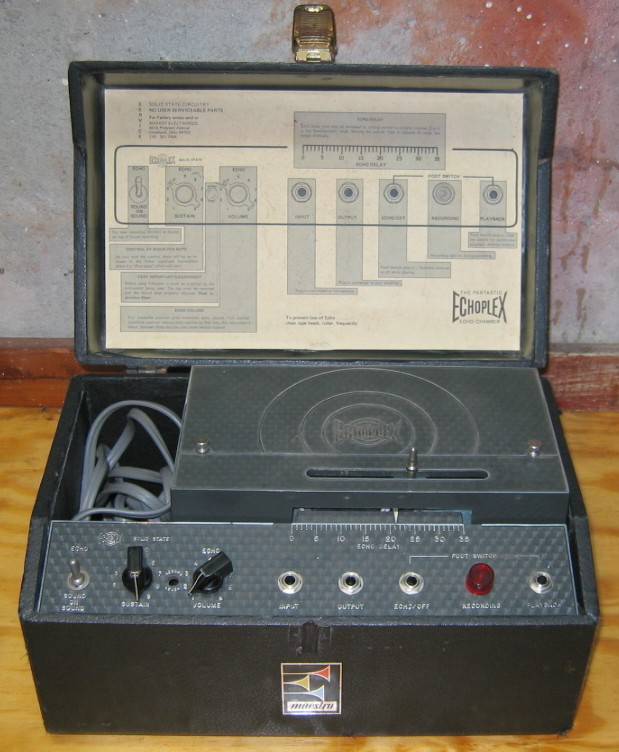The June 11 edition of Greasy Tracks spotlighted musicians who use the Echoplex or a similar tape delay effect, with attention being paid to recordings made in the 1950s through the modern era.

Check out the archive by clicking here, while a playlist is here.
As part of the feature, an interview with a local guitarist and effects aficionado was included. The person, who asked not to be identified, spoke about different styles of tape delay effects that have been used over the years and spotlights specific models and musicians who have taken them to the studio or out on the road.
The innovative guitarist Les Paul is widely acknowledged as the first-known example of capturing an “echo” in 1951 on his “How High The Moon”. Producer Sam Philips helped mainstream the technique when he worked with Elvis Presley.

The pre-cursor to the Echoplex was the Ray Butts-designed and built EchoSonic which first appeared in 1953. The amplifier had a built-in tape echo effect feature which gave musicians the ability to get a “slapback” that effectively doubled that sound, but did so between 60 and 240 milliseconds.
This was most noted in 1950s rock, especially rockabilly stylings. Chet Atkins, Scotty Moore and Carl Perkins were noted guitarists who used the EchoSonic and Atkins purchased the second one produced. The sound it creates has been described as “thicker” and “fatter”.
The Echoplex was designed by Mike Battle and first appeared in 1959. It used magnetic tape which could be played back at different speeds with a feedback variable to create a range of different echoed repeats.
